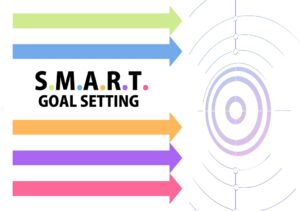Whether you like it or not, knowing how to use SMART criteria to set your business objectives is key to steering your small business toward success. This strategic approach will help you with the challenges and disorder you will encounter as you run your business.
SMART Criteria is a framework that ensures goals are Specific, Measurable, Achievable, Relevant, and Time-bound. This article will define SMART Criteria and explore its significance in the context of small business operations.
It will also examine the role of clear and well-defined objectives in overcoming common hurdles faced by small businesses. Properly implementing SMART Criteria can be a game-changer in elevating the performance and growth trajectory of your small business.
How to Use SMART Criteria to Set Objectives for Small Businesses
SMART Criteria comprises five essential elements that contribute to effective goal-setting

- a. Specific: Clearly defining the objective with explicit details.
- b. Measurable: Establishing quantifiable metrics to assess progress.
- c. Achievable: Setting realistic and attainable goals.
- d. Relevant: Ensuring alignment with broader business strategies.
- e. Time-bound: Assigning deadlines to create a sense of urgency.
Setting objectives plays a pivotal role in fostering the growth and success of small businesses.
Small businesses face unique challenges, such as resource constraints and market competition, making goal-setting particularly crucial for navigating these obstacles.
Role of SMART Criteria in Goal Setting
SMART Criteria enhances goal-setting effectiveness by providing a structured framework for clear and actionable objectives.
Real-world examples showcase businesses that have successfully utilized SMART Criteria, illustrating its practical application and positive impact on achieving desired outcomes. We provide examples to emphasize the tangible benefits of incorporating SMART Criteria in small business goal-setting practices.
How to Use SMART Criteria to Set Objectives for Small Businesses: SPECIFIC (S)
Specificity in goal-setting involves providing precise details about what is to be achieved. Clear objectives leave no room for ambiguity, ensuring everyone involved understands the desired outcome.
Clarity in business goals is paramount reduces misunderstandings and aligns the team toward a common purpose. Specific objectives serve as a guiding light, enabling businesses to stay focused on their intended targets.
Examples of Specific Objectives for Small Businesses
Clear and concise goals for different business areas (e.g., sales, marketing, operations):
- Sales: Increase monthly sales by 15%.
- Marketing: Launch a targeted social media campaign to reach 10,000 potential customers.
- Operations: Reduce production costs by 10% through process optimization.
Tips for Crafting Specific Objectives
- Use the “5 Ws” (Who, What, When, Where, Why):
- Who: Identify the individuals or teams responsible for the task.
- What: Clearly define what needs to be accomplished.
- When: Establish a timeframe for goal completion.
- Where: Specify the location or context of the objective.
- Why: Clearly articulate the purpose and benefits of achieving the goal.
- Avoid vague language and ambiguous terms:
- Use concrete, measurable terms to eliminate ambiguity.
- Provide specific details to ensure a shared understanding among team members.
By incorporating these principles of specificity into your objectives, you will enhance clarity, streamline operations, and work towards achieving your goals effectively.
How to Use SMART Criteria to Set Objectives for Small Businesses: MEASURABLE (M)
Measurability is a critical component of SMART Criteria, emphasizing the need for quantifiable metrics to gauge progress. This element ensures that objectives are not only defined but also measurable, allowing businesses to track their success over time.
The ability to measure progress directly influences performance evaluation. Measurable goals provide a basis for assessing achievements, identifying areas for improvement, and making informed decisions to enhance overall business efficiency.
Examples of Measurable Objectives for Small Businesses
Metrics and Key Performance Indicators (KPIs) for Different Business Goals:
- Sales: Achieve a 20% increase in monthly revenue.
- Marketing: Attain a 15% growth in website traffic.
- Operations: Reduce order fulfillment time by 25%.
Tools and Techniques for Measuring Progress
Implement Analytics and Tracking Systems
- Use analytics tools to monitor website performance. E.g. Google Analytics, Monster Insights
- Implement tracking systems to measure sales and customer engagement. E.g a CRM
- Regularly review financial reports for measurable insights.
Conduct Regular Assessment and Adjustment of Measurable Goals
Periodically assess progress against established metrics, and adjust goals based on changing business dynamics or market conditions.
Incorporating measurable elements into objectives empowers small businesses to track their advancements, refine strategies, and make data-driven decisions.
How to Use SMART Criteria to Set Objectives for Small Businesses: ACHIEVABLE (A)

Achievability within SMART Criteria emphasizes the need to strike a balance between ambitious objectives and practical feasibility.
Goals should challenge the business without being unrealistic, ensuring a sense of motivation without setting the team up for failure.
Small businesses often encounter challenges such as limited resources, tight budgets, and manpower constraints.
Achievability involves recognizing these hurdles and devising strategies to overcome them in the pursuit of set goals.
Examples of Achievable Objectives for Small Businesses
Setting Realistic Targets Based on Resources and Capabilities
- Financial: Increase profits by 10% within the fiscal year.
- Human Resources: Implement a training program to enhance employee skills.
- Operational: Streamline processes to reduce production costs by 8%.
Strategies for Enhancing Achievability
Break Down Larger Goals into Smaller, Manageable Tasks
- Divide overarching objectives into smaller, achievable milestones.
- Foster a sense of accomplishment by completing tasks incrementally.
Collaborate with Team Members and Leverage Expertise
- Engage team members in goal-setting to gather diverse perspectives.
- Leverage the strengths and expertise of individuals within the organization.
Understanding and incorporating the concept of achievability into objectives is essential for small businesses striving to grow sustainably. If you set lofty goals which are unachievable because of current constraints you may have, you are setting your business up for failure even before you leave the “start line”.
Striking the right balance will help set realistic yet challenging goals to propel your business forward and overcome challenges.
How to Use SMART Criteria to Set Objectives for Small Businesses: RELEVANT (R) and TIME-BOUND (T)
Relevance
Relevance, a key element of SMART Criteria, emphasizes the importance of ensuring that objectives are closely aligned with the broader business strategy. Goals should directly contribute to the overall mission and vision, ensuring meaningful progress.
Small businesses often face numerous opportunities and challenges. Relevance involves prioritizing goals that directly impact business growth and steering clear of distractions that may lead the team away from the primary objectives.
Time-bound

Time-bound goals have specified deadlines, creating a sense of urgency and accountability. This element ensures that objectives are not open-ended, prompting timely actions and assessments.
Establishing time constraints fosters a proactive mindset, creates a sense of urgency, and encourages the team to focus on efficient task completion. It also allows for periodic evaluations to track progress against set timelines.
Examples of Relevant and Time-bound Objectives for Small Businesses
Relevant: Develop and launch a new product line aligned with current market trends.
Time-bound: Introduce the new product within the next quarter to capitalize on emerging opportunities.
By incorporating relevance and time-bound aspects into objectives, small businesses can ensure that their goals are not only aligned with the overarching strategy but are also achievable within a defined timeframe.
Conclusion
Now that you have a better understanding of how to use SMART criteria to set objectives, it is time for you to swing into action to integrate SMART Criteria into your goal-setting practices.
By embracing specificity, measurability, achievability, relevance, and time-bound parameters, you will be able to navigate challenges more effectively and propel your business towards sustainable growth.
For assistance with using SMART criteria to set your objectives or any other goal setting challenges CONTACT US TODAY for fast and reliable help.
References
GOC. Writing SMART Objectives. https://www.canada.ca/en/environment-climate-change/services/environmental-funding/tools-for-applying/writing-smart-objectives.html

